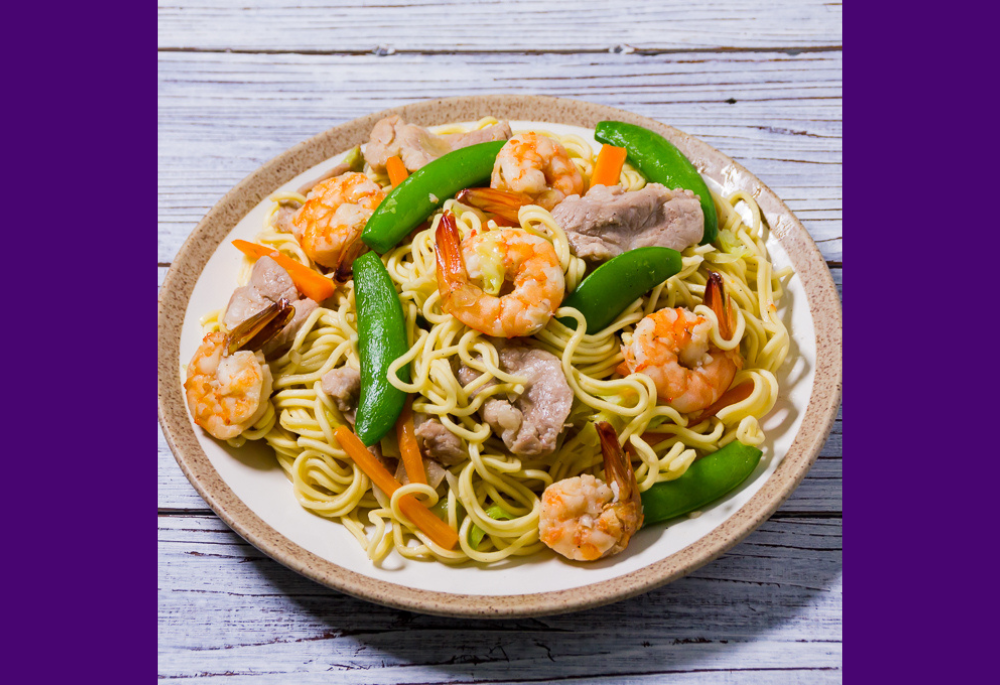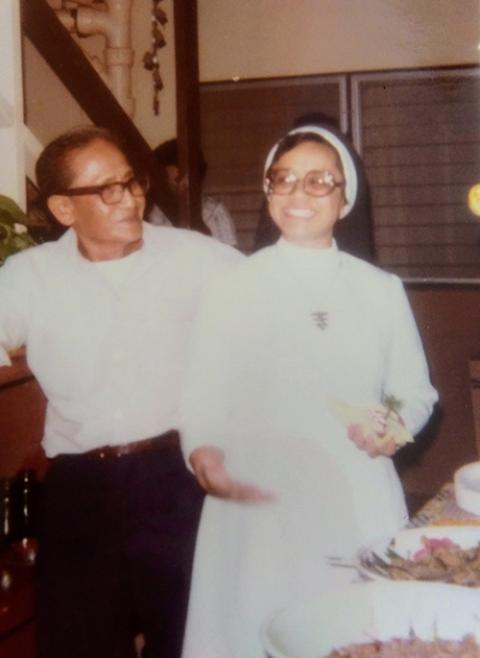
A plate of pancit canton is pictured. On special days like Christmas, pancit was a favorite holiday dish that Terri Laureta's aunt would make, a savory combination of egg noodles, rice noodles, meat and vegetables. (Flickr/Joost Nusselder, BiteMyBun.com, CC BY 2.0 Deed)
"Can you cook? Everybody from Hawaii knows how to cook!" people from the continental United States would often exclaim to me. Well, I don't possess any remarkable culinary talents, but I am grateful for others that have that gift and graciously share it.
When I was 9 years old, my parents decided that I was going to learn how to cook — by myself. All alone in the kitchen, I decided to create "deviled eggs," because the cookbook was not a Filipino cookbook. Not aware of the quantity that a dozen eggs would yield, I boiled all 12. My efforts yielded a total of 24 "deviled egg" halves, to be served at a meal for three people. To make matters worse, I had added too much salt, resulting in eggs that were difficult to eat. My parents ate their fill of the eggs, as though nothing was wrong. I'll never forget their loving acts that day.
Although I was not the prize cook of the family, my father was an outstanding chef. My father had been a cook during the war. It was in these circumstances that he learned to cook for many hungry soldiers. Our family consisted of my father, my mother, and myself. Therein lay the problem. My mother was neither a cook nor an enthusiastic eater. That left me to taste, eat and appreciate my father's "army" portions — rice, meat or fish, and an assortment of Filipino vegetables, often accompanied by the delicious Haden mango for dessert.

Terri Laureta celebrates her father's birthday upon arriving from Syracuse, surrounded by friends and relatives at their home. The image is approximately 40 years old. (Courtesy of Terri Laureta)
Dad took an instant liking to the electric wok, and cooked everything in it, from fried rice, to scrambled eggs, to chicken hekka, and more! When I was already in the convent, he insisted on giving me an electric wok, which then traveled from Hawaii to Central New York. Being a father's daughter, I eventually became enthused over the potential of the electric wok. After the standard experiments, I decided to cook a pineapple upside-down cake in the wok for Christmas dinner. The ingredients were scrumptious, with pineapple slices, walnuts, cherries, brown sugar and a "butter batter"! The "baking" was successful. The faux pas was my not remembering how heavy the wok was, how really heavy the cake was … and how difficult it was going to be turning the wok and the cake right side up! I tried, I really did. The cake did not make it. It fell off the tray, onto the counter, onto the table, onto the floor. I believe I learned my lesson.
I vividly remember one Christmas when my parents decided to celebrate with one of my 12 godfathers at one of the island's pineapple plantations, leaving the house saturated with the unforgettable aroma of garlic. He had cooked pork adobo. Adobo is pork, beef, or chicken marinated in soy sauce, vinegar, garlic, ginger, and peppercorns. Then it is deep fried. To this day, the scent of these ingredients transports me back to that joyous Christmas celebration!
However, my Aunt Rose was undoubtedly the culinary maestro of our family. She achieved prestige during her days in a village in the Philippines for her exceptional cooking and served hearty meals to soldiers visiting the village. One of her more common dishes was dinengdeng: the base of the dish being "bagoong," which is a sauce made from fermented anchovies. To this base are added chicken, pork or fish, and lots of different vegetables: tarong (eggplant), saluyot (spinach), marunggay leaves, sweet potatoes, squash and bitter melon as some of the common vegetables. With this dish is served white rice. On special days (like Christmas) a favorite holiday dish made by my aunt was pancit, a savory combination of egg noodles, rice noodles, meat and vegetables. This Filipino dish is often likened to the popular Chinese dish called lo mein.
Advertisement
When Aunt Rose relocated to Hawaii, she continued to showcase her culinary prowess. She would enlist her brothers to climb coconut trees, providing her with fresh coconuts to create delicious desserts for special occasions.
It was always a treat visiting my Aunt Rose, especially when she baked Portuguese sweet bread. Baking Portuguese sweet bread takes a lot of time and effort, but my aunt was a hard worker. One day, my aunt was going to bake a large amount of bread. Those of you who bake bread know that unbaked bread takes at least two times to be kneaded and allowed to rise. Well, Portuguese sweet bread needs three times to be kneaded and allowed to rise before it can be baked.
The rising bread sat on the dining room table that morning, waiting for its final rising. In my eagerness, I hit one of the pans of dough, which fell to the floor. I quickly picked up the pan and stuffed the dough into the pan, patting the edges so that it looked like the other pans of dough. I was so anxious about the outcome of that particular loaf I could hardly concentrate on my schoolwork. St. Martha, the patron saint of cooks, was good to me that day. The bread turned out very well, despite several creases in its otherwise smooth surface. Auntie Rose made no comment.
My memories of Christmas in Hawaii are filled with love, heritage and the joy of sharing food and love around the table. Each dish made by my father and my Aunt Rose holds a special place in my heart, reminding me of the simple pleasures that make this season truly special.







